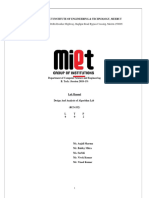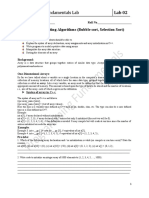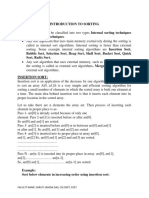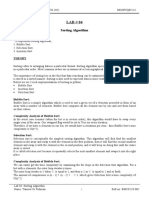0% found this document useful (0 votes)
15 views14 pagesAssignment 4 Solution
The document outlines Assignment Number 4 for the CS2002 Data Structures and Algorithms course, due on May 9, 2025, with a maximum score of 70 marks. It includes seven questions that require the application of various sorting algorithms, such as radix sort, shell sort, cycle sort, bucket sort, Tim sort, comb sort, and counting sort, with detailed steps for each. Each question is worth 10 marks and focuses on demonstrating the sorting process for given arrays.
Uploaded by
f236087Copyright
© © All Rights Reserved
We take content rights seriously. If you suspect this is your content, claim it here.
Available Formats
Download as PDF, TXT or read online on Scribd
0% found this document useful (0 votes)
15 views14 pagesAssignment 4 Solution
The document outlines Assignment Number 4 for the CS2002 Data Structures and Algorithms course, due on May 9, 2025, with a maximum score of 70 marks. It includes seven questions that require the application of various sorting algorithms, such as radix sort, shell sort, cycle sort, bucket sort, Tim sort, comb sort, and counting sort, with detailed steps for each. Each question is worth 10 marks and focuses on demonstrating the sorting process for given arrays.
Uploaded by
f236087Copyright
© © All Rights Reserved
We take content rights seriously. If you suspect this is your content, claim it here.
Available Formats
Download as PDF, TXT or read online on Scribd
/ 14





























































































